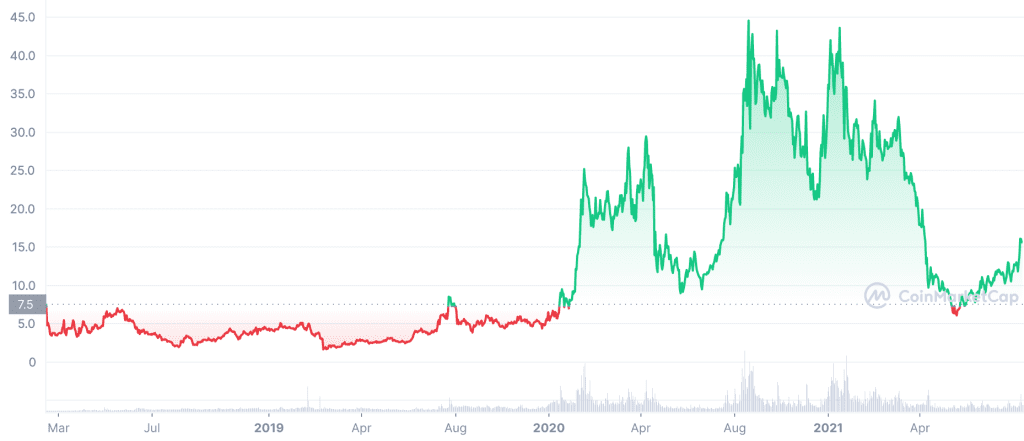To understand what a smart contract coin is, having a basic knowledge of what a smart coin is a preliminary step.
What Are Smart Contracts?
Like any other contract, A smart contract establishes the terms of an agreement. However, unlike traditional contracts, a smart contract’s terms are executed as codes running on a blockchain like Ethereum.
Smart contracts help developers build apps that take advantage of the security, reliability, and accessibility blockchain offers while offering peer-to-peer functionality, basically everything from loans to gaming and down to insurance and logistics.
Smart contracts, like other contracts, lay out the terms of an agreement or deal. What got them the name smart is that their words will run on code rather than paper. They extend the ideas behind Bitcoin, the sending and receiving of money without the presence of a third party or without including a bank for it to be possible.
Apps powered by smart contracts are often called decentralized applications (dApps), and they also include DeFi tech that is being used to transform the world of financing. Decentralized apps allow cryptocurrency holders to engage in financial transactions that would typically seem complex with traditional funding, like saving and loaning.
Smart contracts are best defined as programs stored on a blockchain, ready to run when predetermined terms are met.
What Is Cosmos?
Cosmos is a continuously expanding ecosystem of interconnected apps and services built for the future of decentralization.
Cosmos’s apps and services will connect with the use of IBC, the Inter-blockchain communication protocol. This innovation will enable you to freely exchange assets and data across decentralized blockchains.
Cosmos currently has over 262 apps and services built on its network, some of the most popular ones being Binance Chain, Cosmos Hub, and Terra, and a worth of $66 billion digital assets under their management.
Cosmos believes in interoperability and freedom over siloes and monopolies, collaborations and innovation over competitions, and the status quo.
Cosmos wants to build a free platform that enables the exchange, storage, and security of values without relying on centralized servers.
With the existence of Cosmos, developers can freely build entirely autonomous applications specific to blockchain that would easily interconnect. This means that, unlike leading blockchains, they will no longer be forced to act as smart contracts on another platform’s network. They can choose to opt out of the high transaction fees and network traffic and go along to make their own rules and scales for mainstream adoption.
This would considerably impact the future of DeFi, NFTs, gaming, social networks, crypto marketplaces, and the growth of blockchain technology. Instead of a world where millions of blockchain apps are competing throughout on a single base layer, they can instead have one million blockchain apps interconnected across sovereign blockchains. Cosmos can make this a possibility.
Features Of Cosmos.
The Cosmos network will offer features like interchain accounts, staking, swapping tokens, and collectibles.
- Staking On Cosmos.
Staking means locking up a digital asset to help provide economic security for a public blockchain. In the case of Cosmos, their staking is ATOM.
With ATOM, you can contribute to the governance and securing of the Cosmos Hub. You can also earn rewards in crypto assets by selecting one or more validators.
- Interchain Accounts
Interchain accounts are accounts of the IBC-enabled world. They allow blockchains to have secure control of accounts on other chains over IBC. This feature will allow users to access their entire interchain using a single Cosmos Hub account. One account will control all chains.
- Gravity DEX
The Cosmos Hub will have a Gravity DEX that will enable users to seamlessly swap digital assets from the interchain. This service will improve existing designs by combining AMM, like the Uniswap platform, with an order book-based model and provide a richer and more well-designed trading experience.
- Cosmos Gravity Bridge.
This will be backed by billions of dollars of ATOM staked on the Cosmos Hub; it’ll be the most secure, effective, and decentralized cross-chain bridge leading to Ethereum. It’ll allow Cosmos assets to easily flow into the Ethereum ecosystem as ERC-20 tokens and native ERC-20 tokens to flow into the cosmos ecosystem.
- Staked ATOM.
The Staked ATOM would be able to secure more than the Cosmos Hub. In practice, validators will be able to validate chains that request it (called child-chain) on an opt-in basis, with ATOM delegates as collateral. ATOM stakes would be rewarded with additional earnings in exchange for them securing child chains. The more child chains created, the more their rewards.
- Liquid Staking
Liquid Stakings will be an integral aspect of the cross-chain DeFi space. At their core, liquid staking claims are similar to staked ATOM. Like staked ATOM, liquid staking racks up rewards, but unlike that of staked ATOM, this is liquid staking. Effigy means that the ATOM can be transferred. Since they represent staked ATOM, liquid staking is at risk of being partially burnt if their underlying ATOM gets slashed.
- The Cosmos SDK
The Cosmos SDK is a state-of-the-art blockchain that powers the Cosmos Hub and its rapidly expanding orbit of sovereign chains.
Developers on Cosmos can use the SDK to create innovative applications that give value through exchange with the Cosmos Hub.
- Cosmos And Organizations
Cosmos will give communities the power to organize and allocate needed resources to its members, and individuals can use the tokens to vote on impactful decisions that govern their community. Picture full transparency on how your local government uses your tax payment and even a chance to vote on where it goes.
- Cosmos And Social Networks
With centralized platforms, there are hindrances to complete freedom of expression as content are filtered and censored. Cosmos will empower the community to build autonomous social networks, allowing every user the chance to have a voice, create value and also benefit from the value creation of others.
- Cosmos And Marketplaces
Developers can create exchanges and marketplaces, allowing permissionless global trades with Cosmos.
- The ATOM Token
ATOM is the native token of the Cosmos Hub, and in return for securing the hub’s services by staking ATOM, transaction fees and staking rewards are distributed to the Cosmos hub. These rewards are set to increase with the introduction of services like interchain decentralized exchanges and interchain staking, allowing staked ATOM to secure other blockchains in the Cosmos ecosystem.

Conclusion
Cosmos’s primary intent is to create a network that developers can build on with ease, the Cosmos Hub is its economic center, and the ATOM token would govern it. It’ll be the first blockchain launched on Cosmos’s network, the first of many that will be built to work with one another and be enriched by the connection they’ll make.
The vision of the Cosmos network is underpinned by a robust Cosmos technology that makes the internet of blockchains a possibility. Before the existence of Cosmos, blockchains had to maintain a mainframe supercomputer approach that kept them siloed and unable to communicate with one another. They also had to create and had limited transactions throughout, but that has changed with Cosmos.














